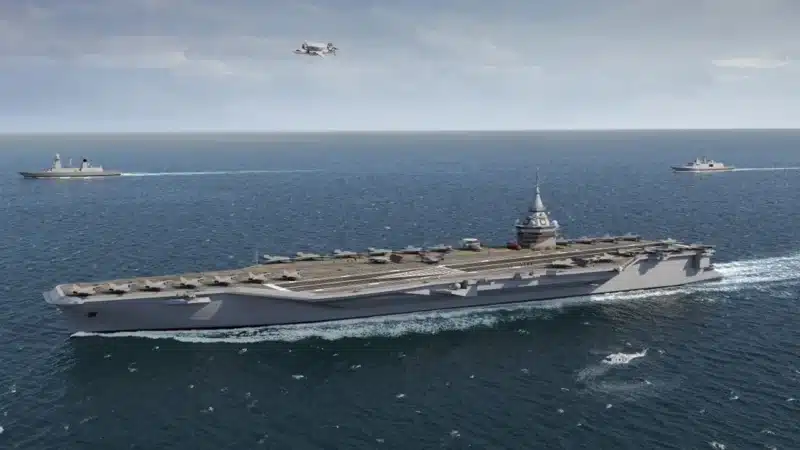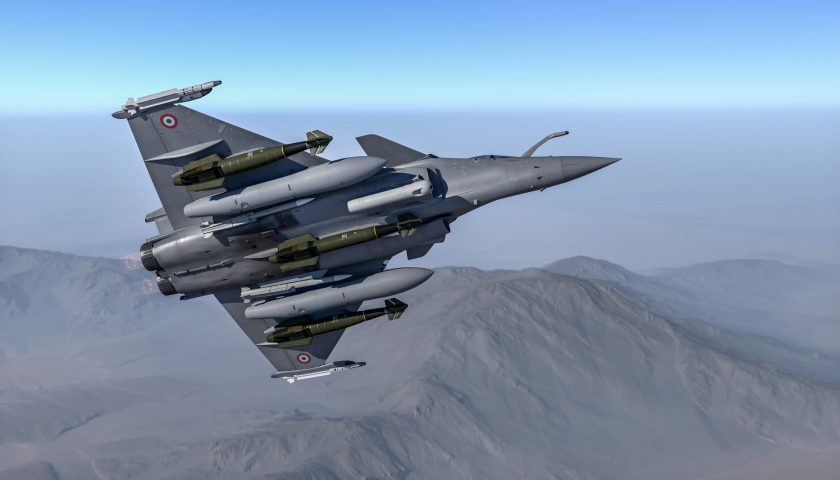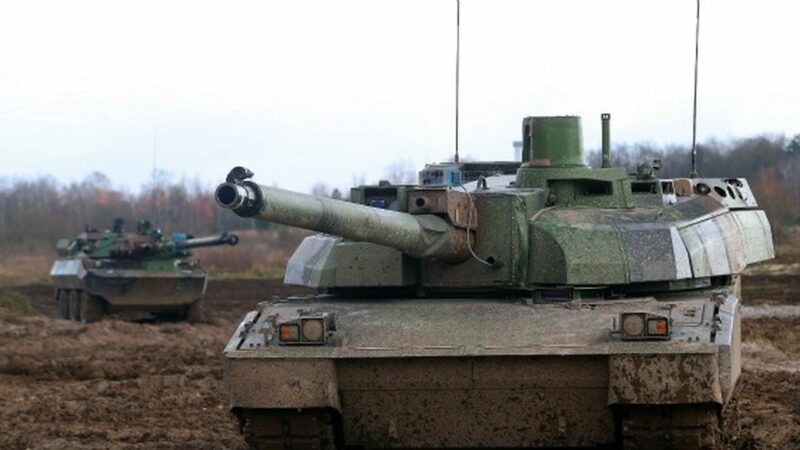Without being exhaustive, the future French Programming Law emphasizes high-intensity engagement, by filling certain critical gaps in the armies.
Although all the arbitrations have not yet been made, the content of the future Military Programming Law which will cover the period 2024-2030 is beginning to be partly known, whether through certain official statements by the Minister of the Armed Forces Sébastien Lecornu, Chiefs of Staff and even President Emmanuel Macron. Thus, the overall budget seems to aim an envelope of €413 billion over the period, i.e. an average annual budget of €58 billion, almost 32% more than the armed forces budget for 2023 (€44 billion), and 66% more than the 2017 budget (€35 billion).
Once integrated into a linear progression over the duration of the military programming law, this envelope would aim to achieve a defense effort of €69 billion in 2030, i.e. between 2,25 and 2,3% of the country's GDP at that date. . In fact, even taking into account inflation (integrated into GDP), the army budget will have grown by 25% over the next LPM, and by more than 50% since 2017.
In addition, the budget would increase, in this hypothesis, by a little more than €3,6 billion per year, which is, more or less, close to the effective ceiling beyond which industrial development such as recruitment capacities armies could not follow. It should be noted in passing that such an increase represents on average more than 50.000 new direct, indirect and induced jobs created each year, between the armies, the defense industry, the supply chain and all related economic activities.
Beyond the purely macroeconomic and budgetary aspects, other information has also leaked out. Thus, the Reserve will be considerably reinforced, with the recruitment of 40.000 new reservists on the military programming law, to reach a format of 80 to 100.000 reservists in 2030, one reservist for 2 active soldiers. The increase in forces will, on the other hand, be measured and highly sectorized to increase the capabilities of the armies in terms of intelligence and cyber warfare.
These forces will enable the armies to strengthen their resilience and their endurance, including in a combat scenario, and in particular in the field of high-intensity engagement, hitherto a poor relation of the French defense effort, ci favoring over the past 20 years projection forces capable of carrying out external operations, particularly in Africa and the Middle East. Not that these forces, such as parachute, marine infantry or mountain units, are useless in the event of a high-intensity conflict, but they alone do not make it possible to meet the needs of this type of conflict.

Information concerning future weapons programs is also beginning to filter through. Thus, President Emmanuel Macron confirmed the continuation of the new generation aircraft carrier program during his wishes to the armies, although, according to our sources, it was threatened until a few days before the presidential announcement. The transformation Rafale of French hunting will be accelerated, even if the Mirage 2000D currently being modernized will serve beyond this until 2034.
In addition, special efforts will be made to strengthen and expand the intelligence capabilities of the armies, which notably involves the densification of the satellite network. But it is in the area of high-intensity engagement that the most significant efforts will be made. Thus, on the military programming law, the Rafale will be equipped with means of electronic warfare and suppression of opposing anti-aircraft defenses designated by the acronym SEAD (Suppression of Enemy Air Defense) in English.
Air defense will also be reinforced, with the acquisition of additional SAMP/T systems, but also of SHORAD MICA VL short-range systems. The French Navy's frigates will also see their capabilities enhanced, in particular by giving the SYLVER vertical missile launcher system the ability to deploy different types of missile.
The Army has announced, for its part, that it intends to acquire several thousand wandering ammunition from the LPM, but also to equip its armored vehicles, primarily the Leclerc tanks, with hard-Kill protection systems. If these abilities are known to you, it may be because they have all been identified as essential in several of our articles, including one listing precisely these 5 capabilities to strengthen the high intensity capabilities of the French armies, released in 2021.
Air and Space Force: SEAD and SHORAD Capabilities
The urgency of provide the Air and Space Forces, but also French naval aviation with capabilities to suppress anti-aircraft defenses, has been discussed in a first article published in September 2019. Since then, nearly a dozen articles of the same type have been published by Méta-defense, to the point that the subject went up to the Defense Committee of the National Assembly, relayed by the deputy of the opposition JC Lagarde, but also by the deputy of the presidential majority F. Gouttefarde during the previous magistracy.
Sadly, the answer then given by the Ministry of the Armed Forces was a perfect example of wooden language accompanied by obvious bad faith. Indeed, even if it is discreet by nature, and protected by a SPECTRA system recognized for its performance, the Rafale To date, it does not have a jamming and electronic warfare pod capable of encompassing other devices in an electronic defense bubble, nor munitions specialized in eliminating opposing anti-aircraft systems. This weakness had also been at the heart of the US argument in favor of the Super Hornet in India, the latter being able to be declined into an electronic warfare Growler.

The war in Ukraine has shown, for its part, how effective modern anti-aircraft systems, including Russian-made ones implemented by the two belligerents, are now. In fact, for several months, it appears that Russian aircraft, such as the Su-30SM and the Su-35s, carry on each mission near the line of engagement, an anti-radiation missile like the Kh-31P, so as to engage and destroy an enemy radar, which comes to follow it.
A similar procedure has been implemented on the Ukrainian side, allowing the Mig-29s to use the AGM-88 Harm anti-radar missile, for the same reasons. Beyond these missiles, Russian aircraft now systematically carry one or more additional jamming pods, allowing for example to protect other aircraft, such as attack aircraft such as the Su-25, but also combat helicopters or transport, also very vulnerable to anti-aircraft systems.
We therefore understand why the Air Force, and probably naval aeronautics, won their case to acquire this capability during the next LPM, even if it means ridiculing the response given by the Ministry of the Armed Forces a few months earlier in committee.

The rest of this article is for subscribers only
The Classic subscriptions provide access to
all articles without advertising, starting at € 1,99.
Newsletter subscription
Register for the Meta-Defense Newsletter to receive the
latest fashion articles daily or weekly


[…] […]
[…] February 2, 2023 […]
[...] which will frame the investments of the State in these armies for the next 7 years, is beginning to be increasingly clear. However, beyond the some €400 billion of investments planned over the 7 years to […]
[…] new Military Programming Law 2024-2030 being finalized will see, for its part, the appropriations devoted to the armies grow again by 30% in 7 years, for […]
[…] armies in Europe and beyond. Even in France, this influence is noticeably felt on the next Military Programming Law, which must in particular give back to the air forces Defense Suppression capabilities […]